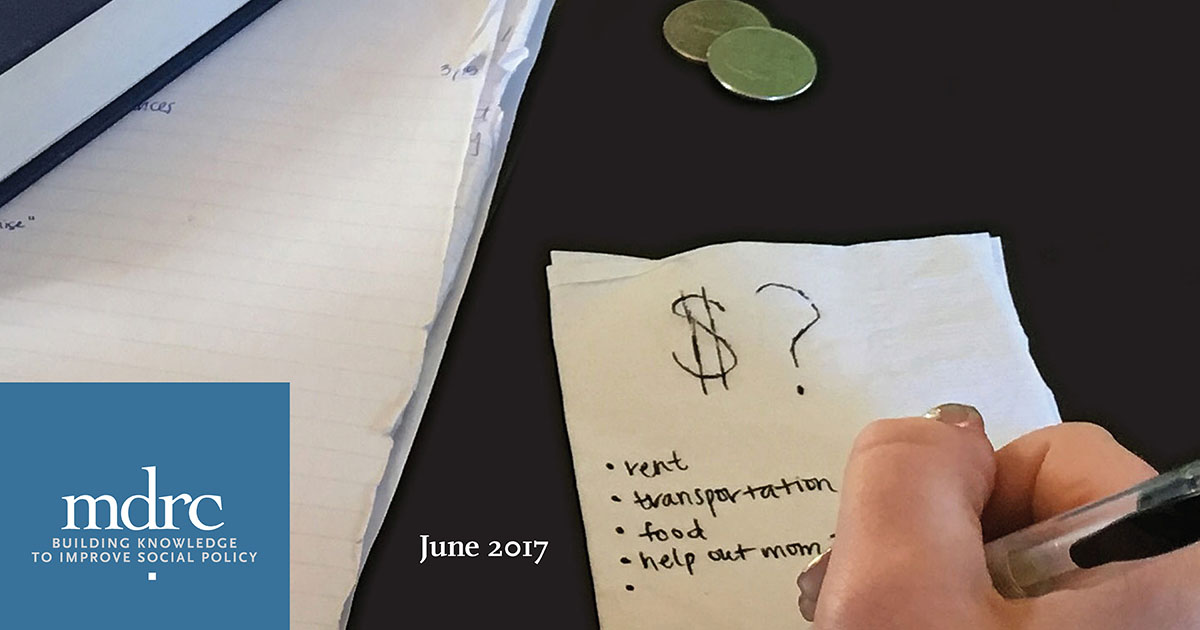Aligning Aid with Enrollment
Interim Findings on Aid Like A Paycheck

Evidence shows that financial aid increases college enrollment. For many students at low-cost community colleges, this aid is intended to cover more than tuition and fees; after those are paid, the remainder is paid out, or “refunded,” to students to help with their living expenses while they are enrolled in school. Often, however, the total amount of aid does not come close to covering the cost of attendance for full-time students. Many still struggle to find the means to support their studies and pay their bills, and the majority of students enrolled at two-year public institutions report feeling financial stress related to paying for school.
Most colleges distribute financial aid refund amounts to students in one or two lump sums during the term. Aid Like A Paycheck is a study of an alternative approach, in which financial aid refunds are disbursed biweekly, with the goal of helping students stretch their financial aid (including federal Pell Grants, state aid, and loans) to cover expenses throughout the term. MDRC is conducting a mixed-methods study of biweekly disbursements at two community colleges in the metropolitan area of Houston, Texas. The study includes qualitative research on the program’s implementation and a randomized controlled trial to rigorously estimate the impacts of the policy on students’ academic and financial outcomes.
Results at the midpoint of the evaluation present a mixed picture:
-
The colleges were able to disburse aid biweekly as intended, but communications about the policy and about financial aid in general were often unclear to students.
-
It appears that students assigned to receive biweekly disbursements were more likely than those receiving a standard lump sum to feel that their finances caused significant stress at the start of the term. By the end of the semester, students in the two groups reported comparable levels of financial stress.
-
Biweekly disbursements reduced students’ use of federal loans and debt to the college after one semester, without reducing the overall aid they received.
-
On average, there is little consistent evidence of biweekly disbursements improving students’ key academic outcomes. However, at one college, students in the biweekly group experienced a 6 percentage point increase in enrollment in the second semester of school.
-
Although the policy raised the possibility of cost savings for the colleges and the federal government, there is little evidence of such savings so far.
These interim findings should be viewed with caution, but colleges interested in moving to biweekly disbursements may find useful lessons from the early implementers, as discussed in this report.
In 2018 MDRC will present final results based on further research, including additional students and longer follow-up, to better understand the impacts of biweekly disbursements at the two Houston-area colleges. The final report will also include a deeper look at the program’s implementation at a third community college district, where biweekly disbursements of financial aid refunds recently became the standard policy for all students.







